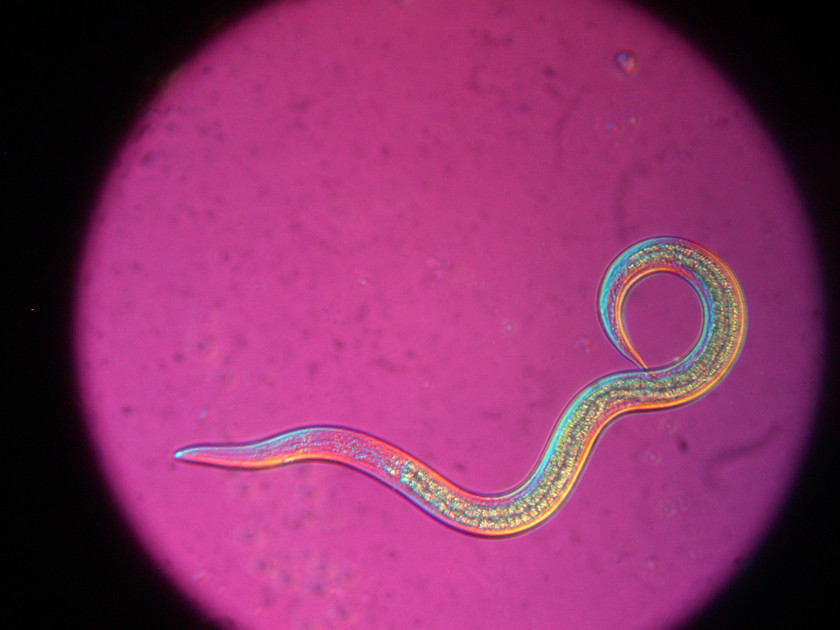What's the difference between Parasitic and Beneficial Nematodes?
Oct 21, 2025
Ever wondered “What’s a nematode?” or why SpongeBob had an entire episode about them? In the classic Season 1 episode “Home Sweet Pineapple” (1999), a swarm of nematodes devours SpongeBob’s pineapple house—an exaggerated but memorable nod to real nematodes that feed on plants. In reality, nematodes are microscopic roundworms found in soil worldwide. Some, like root-knot nematodes, attack plant roots and cause serious crop damage. Others, called beneficial nematodes, are natural pest hunters that protect plants from soil-dwelling insects like fungus gnats, thrips, and grubs.
Understanding the difference between harmful and helpful nematodes is essential for healthy plants and sustainable soil management.
What Are Nematodes?
Nematodes, commonly called roundworms, are a diverse group of microscopic, unsegmented worms found in soil worldwide. They play many roles in ecosystems—some are harmless decomposers, others are plant parasites, and some are powerful allies in pest control. Understanding the difference between harmful and beneficial nematodes is essential for growers who want healthy crops and sustainable soil management.
Want to Explore the Science Behind Beneficial Nematodes?
All About Beneficial Nematodes—When to Use Them and Why They Work
The Two Main Types: Parasitic vs. Beneficial
1. Plant-Parasitic Nematodes (The Harmful Kind)
What They Are: These nematodes attack plant roots, feeding on root tissue and disrupting water and nutrient uptake.
Common Examples: Root-knot nematodes (Meloidogyne spp.), lesion nematodes (Pratylenchus spp.).
Damage Symptoms:
Root galls or knots
Stunted growth and yellowing leaves
Poor yield and increased susceptibility to disease
Why They’re a Problem: They weaken plants from below the surface, often going unnoticed until damage is severe. Chemical nematicides have been widely used, but many are now restricted due to environmental and health concerns.
2. Beneficial Nematodes (The Helpful Kind)
What They Are: Also called entomopathogenic nematodes, these species parasitize insects—not plants. They are natural enemies of many soil-dwelling pests.
Key Beneficial Nematodes: Steinernema and Heterorhabditis.
How They Work:
Actively seek out insect hosts in soil.
Enter through natural openings and release symbiotic bacteria that kill the insect within 24–48 hours.
Reproduce inside the host, releasing new infective juveniles to continue the cycle.
Why They’re Safe: They do not harm plants, humans, pets, or beneficial insects. Their host range is limited to specific insect pests.
Key Differences at a Glance
| Feature | Plant-Parasitic Nematodes | Beneficial Nematodes |
|---|---|---|
| Target | Plant roots | Insect pests |
| Impact | Reduces plant vigor, causes root damage | Reduces pest pressure in soil |
| Host Range | Broad (many crops) | Narrow (specific insect stages) |
| Safety | Harmful to crops | Safe for plants, people, and pollinators |
| Use in IPM | Not Typical | Actively used as a biological solution |
Why This Matters for Growers
Not all nematodes are bad! While plant-parasitic nematodes can devastate crops, beneficial nematodes are a cornerstone of Integrated Pest Management (IPM).
Beneficial Nematodes in Action
Targets: Fungus gnat larvae, thrips pupae, vine weevils, Japanese beetle grubs, cutworms, and more.
Products: Entonem (Steinernema feltiae), Larvanem (Heterorhabditis bacteriophora) and Capsanem (Steinernema carpocapsae) are widely used in greenhouses, nurseries, outdoor growing, houseplants and more.
Benefits:
- No chemical residues
- No resistance development
- Compatible with IPM programs
Final Takeaway
Think of nematodes as two very different teams:
Plant-parasitic nematodes = root attackers → manage and prevent.
Beneficial nematodes = pest hunters → integrate into your IPM program for sustainable control.
Learn More:
All About Beneficial Nematodes—When to Use Them and Why They Work


